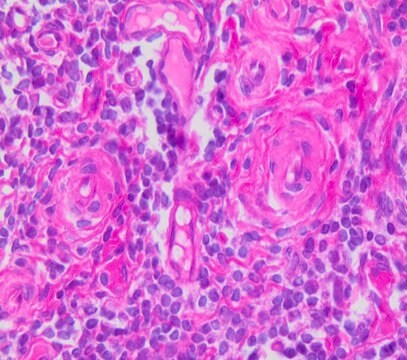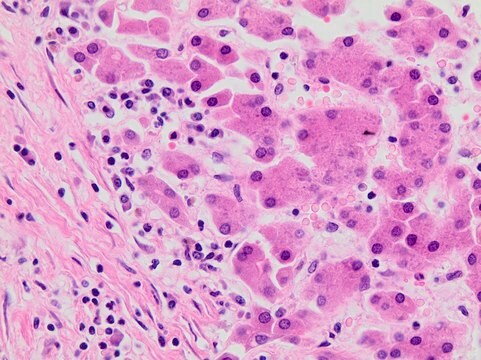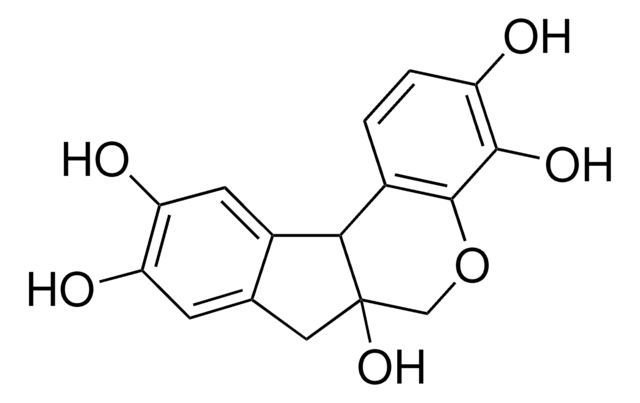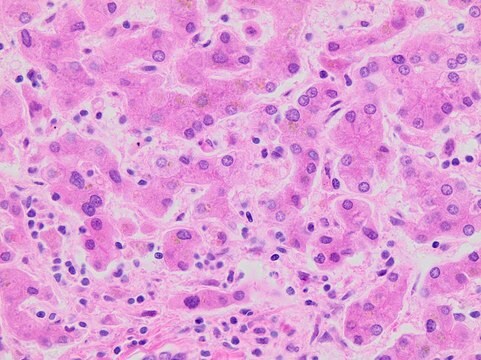Recommended Products
form
powder
Quality Level
IVD
for in vitro diagnostic use
concentration
10 ×
pH
7.0-7.8
application(s)
hematology
histology
storage temp.
room temp
Application
Used as a "blueing reagent" in hematoxylin and eosin staining procedures. Scott′s Tap Water Substitute Concentrate has been used in transferase−mediated dUTP nick end labeling (TUNEL) assay. It has been used in immunohistochemical analysis.
Other Notes
MgSO4 • 7H2O, 200 g/L + NaHCO3, 20 g/L
Preparation Note
Scott′s Tap Water Substitute is prepared by mixing 1 part of Scott′s Tap Water Substitute Concentrate with 9 parts deionized water.
signalword
Warning
hcodes
Hazard Classifications
Aquatic Chronic 2 - Eye Irrit. 2 - Skin Irrit. 2 - Skin Sens. 1
Storage Class
10 - Combustible liquids
wgk_germany
WGK 3
ppe
dust mask type N95 (US), Eyeshields, Gloves
Certificates of Analysis (COA)
Search for Certificates of Analysis (COA) by entering the products Lot/Batch Number. Lot and Batch Numbers can be found on a product’s label following the words ‘Lot’ or ‘Batch’.
Already Own This Product?
Find documentation for the products that you have recently purchased in the Document Library.
Customers Also Viewed
Intermittent metronomic drug schedule is essential for activating antitumor innate immunity and tumor xenograft regression
Chen CS, et al.
Neoplasia, 16(1), W22-W27 (2014)
Histophatologic Techniques (2006)
Impact of tumor vascularity on responsiveness to antiangiogenesis in a prostate cancer stem cell-derived tumor model
Zhang, et al.
Molecular Cancer Therapeutics (2013)
Beth G Ashinsky et al.
Acta biomaterialia, 111, 232-241 (2020-05-25)
Tissue-engineered replacement discs are an area of intense investigation for the treatment of end-stage intervertebral disc (IVD) degeneration. These living implants can integrate into the IVD space and recapitulate native motion segment function. We recently developed a multiphasic tissue-engineered disc-like
Kautilya Kumar Jena et al.
The EMBO journal, 37(18) (2018-08-26)
Sequestration of protein aggregates in inclusion bodies and their subsequent degradation prevents proteostasis imbalance, cytotoxicity, and proteinopathies. The underlying molecular mechanisms controlling the turnover of protein aggregates are mostly uncharacterized. Herein, we show that a TRIM family protein, TRIM16, governs
Our team of scientists has experience in all areas of research including Life Science, Material Science, Chemical Synthesis, Chromatography, Analytical and many others.
Contact Technical Service









